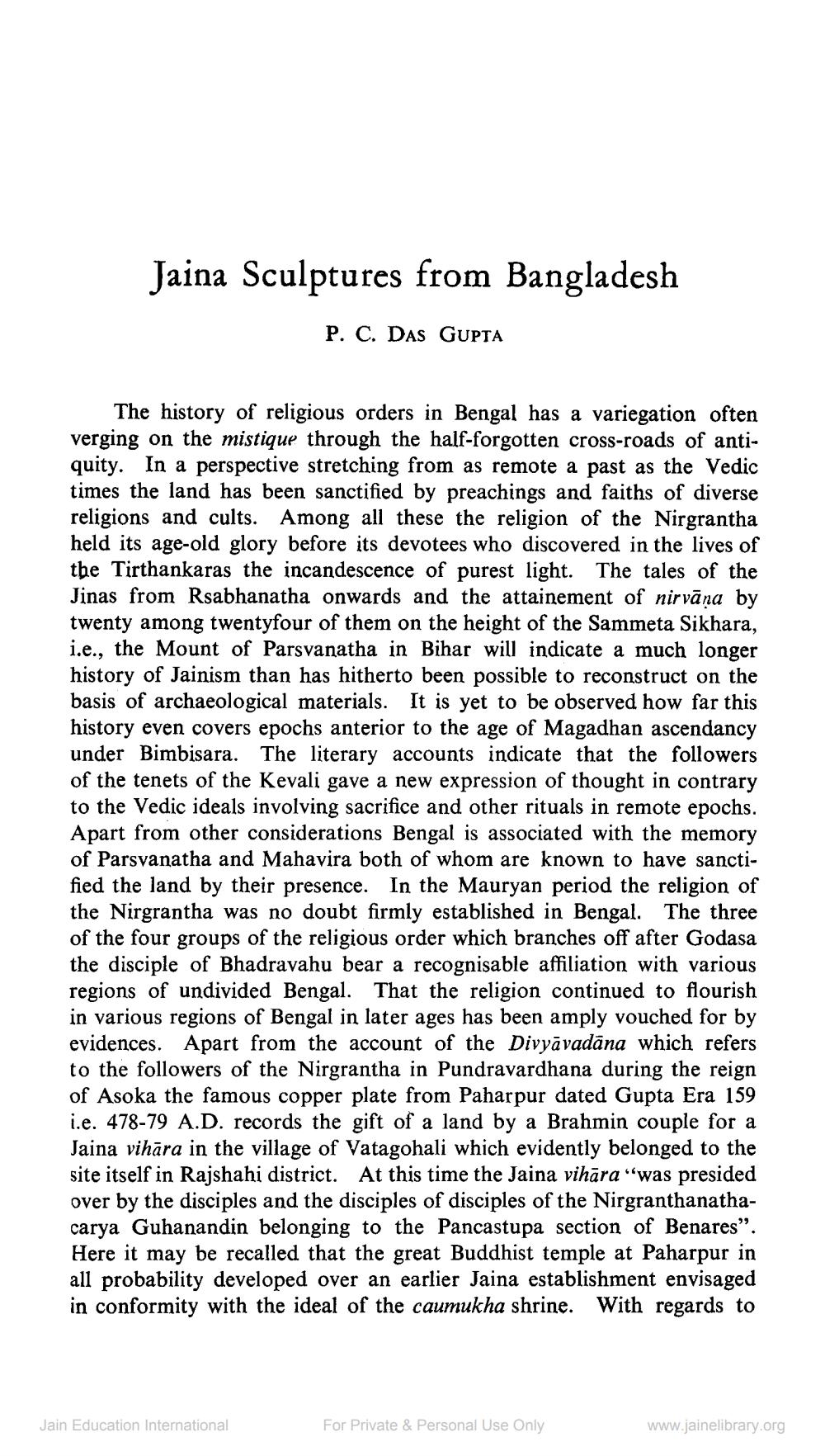________________
Jaina Sculptures from Bangladesh
P. C. DAS GUPTA
The history of religious orders in Bengal has a variegation often verging on the mistique through the half-forgotten cross-roads of antiquity. In a perspective stretching from as remote a past as the Vedic times the land has been sanctified by preachings and faiths of diverse religions and cults. Among all these the religion of the Nirgrantha held its age-old glory before its devotees who discovered in the lives of the Tirthankaras the incandescence of purest light. The tales of the Jinas from Rsabhanatha onwards and the attainement of nirvāna by twenty among twentyfour of them on the height of the Sammeta Sikhara, i.e., the Mount of Parsvanatha in Bihar will indicate a much longer history of Jainism than has hitherto been possible to reconstruct on the basis of archaeological materials. It is yet to be observed how far this history even covers epochs anterior to the age of Magadhan ascendancy under Bimbisara. The literary accounts indicate that the followers of the tenets of the Kevali gave a new expression of thought in contrary to the Vedic ideals involving sacrifice and other rituals in remote epochs. Apart from other considerations Bengal is associated with the memory of Parsvanatha and Mahavira both of whom are known to have sanctified the land by their presence. In the Mauryan period the religion of the Nirgrantha was no doubt firmly established in Bengal. The three of the four groups of the religious order which branches off after Godasa the disciple of Bhadravahu bear a recognisable affiliation with various regions of undivided Bengal. That the religion continued to flourish in various regions of Bengal in later ages has been amply vouched for by evidences. Apart from the account of the Divyāvadāna which refers to the followers of the Nirgrantha in Pundravardhana during the reign of Asoka the famous copper plate from Paharpur dated Gupta Era 159 i.e. 478-79 A.D. records the gift of a land by a Brahmin couple for a Jaina vihāra in the village of Vatagohali which evidently belonged to the site itself in Rajshahi district. At this time the Jaina vihāra “was presided over by the disciples and the disciples of disciples of the Nirgranthanathacarya Guhanandin belonging to the Pancastupa section of Benares”. Here it may be recalled that the great Buddhist temple at Paharpur in all probability developed over an earlier Jaina establishment envisaged in conformity with the ideal of the caumukha shrine. With regards to
Jain Education International
For Private & Personal Use Only
www.jainelibrary.org




